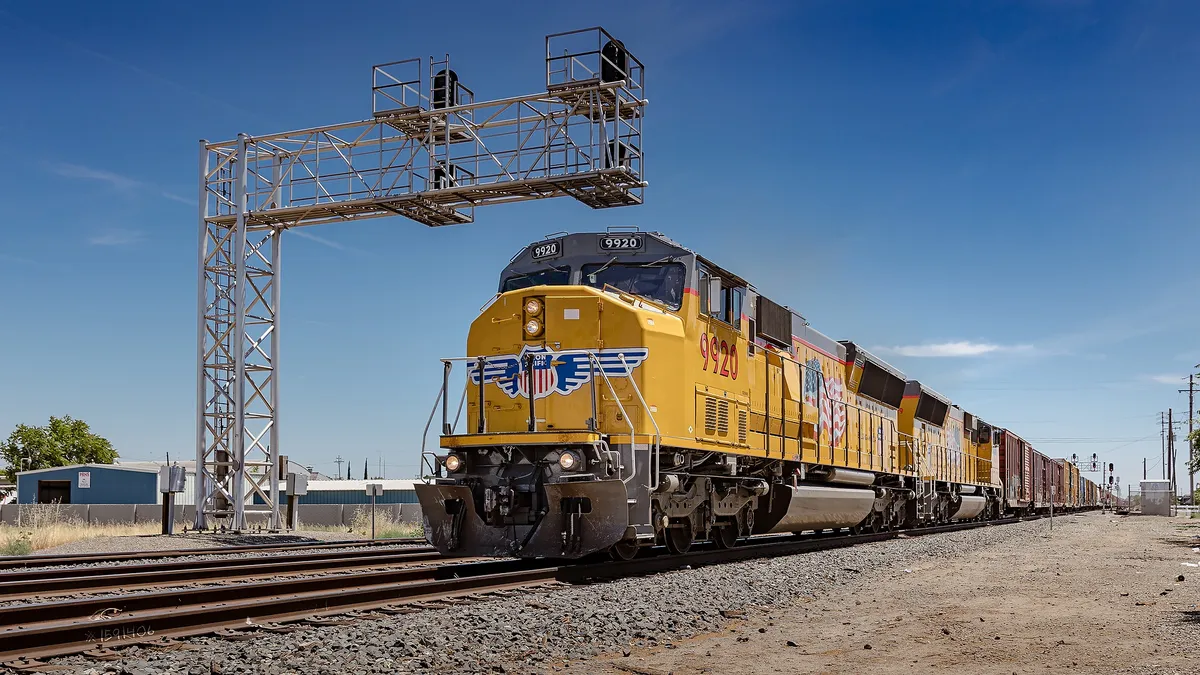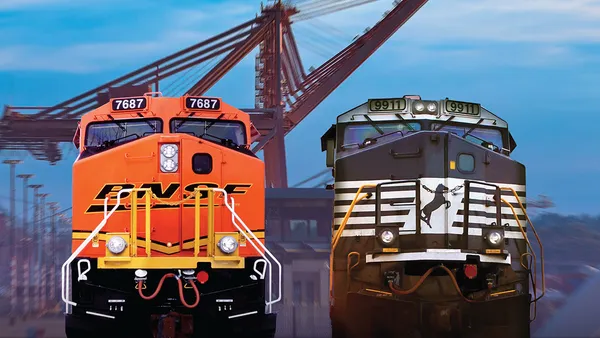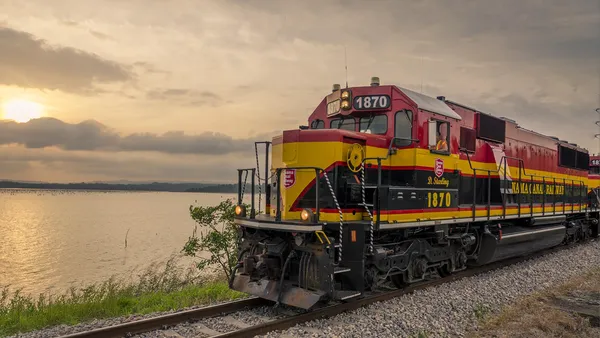Dive Brief:
-
Union Pacific Railroad will set science-based targets for reducing its carbon emissions, the railroad announced in a press release Tuesday. Science-based targets are emissions reduction goals set in line with the level of decarbonization required to keep global temperature increase below 2 degrees Celsius compared to pre-industrial levels.
-
The railroad submitted a letter stating its intention to the non-profit Science-based Targets initiative (SBTi) and "will use the SBTi's Sectoral Decarbonization Approach Transport tool, which models targets for direct and indirect transportation emissions," to develop its reduction targets, according to the release.
-
Union Pacific will join CSX and Canadian National as the only U.S.-operating Class I railroads that have set science-based targets for carbon reduction. Canadian National set targets in 2017, committing to reduce emissions 29% by 2030 based on 2015 levels. CSX just committed to set targets in January. After committing to the initiative, companies have two years to formally set and submit reduction targets to the initiative for approval and publicize the targets.
Dive Insight:
Railroads have touted themselves as a more sustainable way to transport goods for years as they try to pull freight off the highways and onto the rails.
"It is important to note railroads already are one of the most fuel-efficient means of transportation. Moving freight by rail instead of truck reduces GHG emissions by up to 75%," reads the railroad's press release (a stat also touted by the Association of American Railroads. And a 2019 report from the International Energy Agency said a "greater reliance on rail has the potential to cut [global emissions] growth."
Though intermodal growth has slowed since the boom year of 2018, some anecdotal evidence suggests brands not normally associated with rail freight are considering giving it a larger share of their freight spend, with sustainability in mind. Luxury clothing brand Hugo Boss mentioned increasing its use of rail freight in its 2018 Sustainability Report as part of the company's effort to reduce the environmental impact of its logistics operations.
But despite the relatively low direct emissions of railroads compared to trucks, few railroads have publicly committed to analyzing and reducing their carbon footprints.
"This is a challenging task as it means examining every aspect of our operation and looking for innovative solutions while continuing to create long-term value for our shareholders, customers, employees and the communities where we operate," said Union Pacific CEO Lance Fritz.
Strategies employed by Canadian National to progress toward its targets include close review and communication with fleet management about fuel efficiency strategies, encouraging customers to choose more efficient services, prioritizing emissions in procurement decisions and employing technologies to reduce the horsepower-to-tonnage ratio of the railroad, according to CN's Carbon Disclosure Project Report for 2019. Roughly 90% of the railroad's emissions come directly from rail operations, explained the report, so this is where the brunt of emissions reduction work must be directed.
A longstanding close relationship with the coal industry, an important and troubled rail shipper, complicates railroads' record on climate issues.
A December report from The Atlantic alleged that by supporting a pro-coal trade group, BNSF, Norfolk Southern, Union Pacific and CSX all contributed to climate change denial efforts. Drexel Professor of sociology and environmental science Robert Brulle called theses railroads an "integral component of opposition to climate action," in the report.
Union Pacific denied this claim to The Atlantic and touted years of public filings acknowledging climate change.















